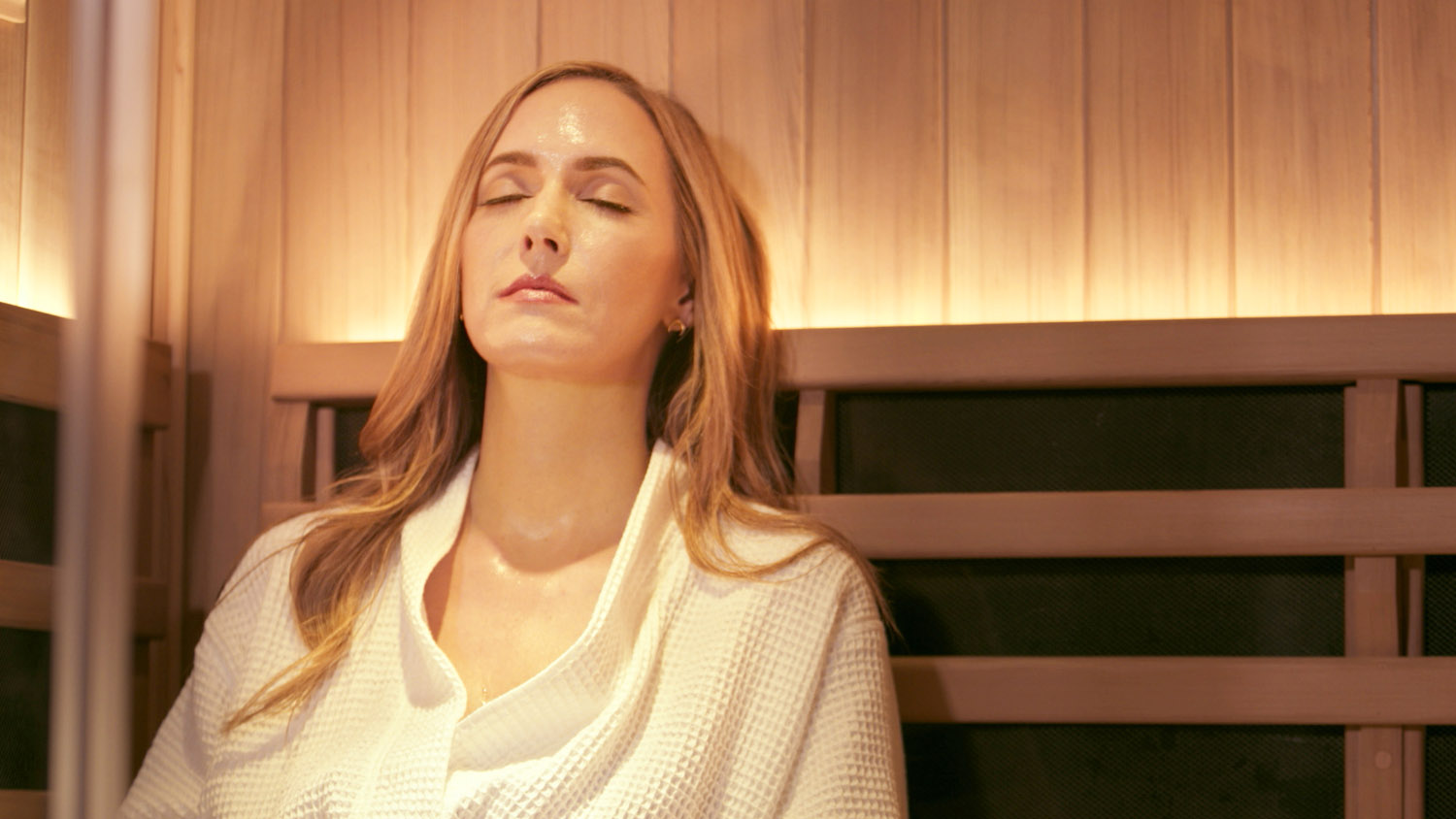
In a world full of stress in every corner of life, many continue to pile on added physical stress in a “go hard or go home” mentality (gainz, anyone?). While we know that training, especially quality needs-based training, is particularly useful and needed, we also tend to underestimate the importance of proper recovery. Simply said, the desired adaptations we all seek from the hours put in throwing iron and running like the wind won’t occur without rest and regeneration. This week we want to touch on one of the many tools for recovery that you may want to look into; The Sauna.
You may have grown up viewing the sauna as an elderly destination for folks at your local gym, at least this is how I grew up seeing it. Typically, saunas are used for relaxation and stress reduction where sweating occurs (associated with detoxification) due to the high heat, which pushes the body into a relaxed, parasympathetic (opposite of “fight or flight”) state. The benefits of heat bathing have much to do with the self-induced fever that the sauna creates, which is why many try to get in the sauna when they start to feel ill. Other than that, saunas have shown to improve cellular health (due to increased blood flow), lower blood pressure, and promote muscle recovery and much more.
In this post, I am going to discuss the traditional sauna and the infrared sauna. While both heat the body to induce sweating and relaxation there are differences worth noting and may lead you to pick one over the other depending on the end goal. The main difference lies in how the body is heated.
While the traditional sauna tends to induce sweating from the extreme heat, the IR sauna emits light that penetrates the body to raise the temperature internally. Both cause heavy sweating and detoxification, but the mode in which this is activated is different. Another big difference, is temperature. Traditional saunas typically range from 150-190 degrees, while IR saunas typically sit between 120-140 degrees Fahrenheit. Because infrared saunas use infrared light which can penetrate 1-2 inches beneath the skin it makes it easier to stay in for longer periods of time at a lower temperature, thus why many are choosing infrared over traditional.
It is also worth noting that light therapy (found in infrared saunas) has shown to have benefits that the traditional sauna (no light) does not. While we could write pages and pages on light therapy, the main benefits from the light in infrared saunas include reduced swelling and inflammation, pain relief, and accelerated healing due to the improved mitochondrial function from red light.
This is highly debated, but for healthy individuals without a history of heart disease, high or low blood pressure or circulatory issues it is generally recommended to stay in the sauna is at least 10 minutes once you start to sweat. To spend more time in the sauna and reap more benefits it is recommended to break up sessions into at least 15-minute bouts. One study (1) that showed improved lipid panels equal to that of exercise performed 15 minutes in followed by 2 minutes break done 3 times (45 min total in the sauna). Like most anything, a proper introduction to a new stimulus ramped up over time would be recommended.
15 mins in – 2 mins out. Repeat 2-5 times (improved lipids study)
15 mins in – 30 mins out. Repeat for two rounds total. (improved GH 5-fold)
20 mins in – 30 mins out. Repeat for two rounds total. (improved GH two-fold)
30 mins straight. (endurance athlete study)
It is clear that there are multiple protocols you can follow, but in general longer and hotter environments yield more benefits.
Depending on the goal of the individual, there have been many sauna studies done in multiple facets of performance and recovery. For endurance athletes, the use of infrared sauna post-training has resulted in lower heart rates and greater counter-movement jump measurements (2). What does that mean? For those that engage in endurance training, the use of infrared sauna afterward appears favorable for the neuromuscular system to recover.
Dr. Rhonda Patrick, who has done significant research on sauna use has also found that hyperthermic conditioning (use of sauna) independently aside of aerobic physical activity induces adaptations that reduce the later strain of your primary aerobic activity. Notable physiological adaptations that occur subsequent to acclimation to heat are lower heart rate (4) (also found in the study above), lower core body temperature during workload, increased blood flow to skeletal muscle and other tissues (5), reduced rate of glycogen depletion due to improved muscle perfusion (increased blood flow to muscles) (6), increased red blood cell count and increased efficiency of oxygen transport to muscles (7).
Another way that the use of a sauna can improve hypertrophy (growth) in muscles, hormone function, and fat loss is the spike in growth hormone it elicits. It has been shown that two – 20-minute sessions (at about 175 degrees) separated by a 30 minute cooling period elevated growth hormone two-fold over baseline (8). At the same time, two 15-minute sessions (at about 212 degrees) separated by a 30 minute cooling period resulted in a five-fold increase in growth hormone (8). While this growth hormone spike generally only persists for a couple of hours post-sauna this is amazing information, especially for those trying to heal or return from injury!
Meanwhile, a Polish study found that use of saunas improved lipid panels in individuals just as much as a moderate-intensity exercise plan. Those who took part in the study showed lower total cholesterol, lower LDL cholesterol (the bad kind), increased HDL cholesterol (the good kind), and increases in blood plasma levels. Again, this was found using the 15 in, 2 out for 3 rounds protocol daily.

Hyperthermia (full body heat stress) has been shown to increase the expression of brain-derived neurotrophic factor (aka BDNF) more than exercise alone when used in conjunction with exercise. BDNF is a protein which can be thought of as fertilizer, or the “miracle-gro” for our brain. BDNF helps the brain to develop new connections, repair failing brain cells, and protect healthy brain cells. Maintaining adequate levels of the power-packed protein can protect our brains from neurodegenerative diseases like Alzheimer’s Disease and Parkinson’s Disease.
In addition, it is worth noting that even if not using with the end goal of power, endurance or general health reason the sauna can assist in true detoxification. Directly or indirectly, toxic residues find their way into our air, food and water supplies. The net effect of this ecological overload inevitably shifts the body’s balance, or homeostasis to interfere with our natural biological tendencies. That being said, consistent removal of these toxins via sauna use is highly recommended.
We use the Clearlight infrared sauna and it benefits our athlete’s post-workout by pushing them into a parasympathetic state so start the regeneration, quicker. The Clearlight also offers the ability to use the full infrared spectrum of light, or just a certain type of light depending on the state and background of the athlete.
It’s clear that there are an array of benefits from using the sauna (both traditional and infrared). The key to success is building up a thermal tolerance over time and not doing too much too soon. It is also worth noting that not everyone is ready for the sauna and you should consult with a doctor before using, especially if there are previous medical conditions.
Gryka, D. Institute of Biomedical Sciences, University School of Physical Education, Kraków, Poland. The effect of sauna bathing on lipid profile in young, physically active, male subjects. http://www.ncbi.nlm.nih.gov/pubmed/25001587
Mero, A. Department of Biology of Physical Activity, University of Jyväskylä, Finland. Effects of far-infrared sauna bathing on recovery from strength and endurance training sessions in men. http://www.ncbi.nlm.nih.gov/pubmed/26180741
Kukkonen, H. Health effects and risks of sauna bathing. UKK Institute for Health Promotion Research, Tampere, Finland. http://www.ncbi.nlm.nih.gov/pubmed/16871826
Hannuksela, M. L. & Ellahham, S. Benefits and risks of sauna bathing. The American journal of medicine 110, 118-126 (2001).
Ricardo J. S. Costa, M. J. C., Jonathan P. Moore & Neil P. Walsh. Heat acclimation responses of an ultra-endurance running group preparing for hot desert-based competition. European Journal of Sport Science, 1-11 (2011).
King, D. S., Costill, D. L., Fink, W. J., Hargreaves, M. & Fielding, R. A. Muscle metabolism during exercise in the heat in unacclimatized and acclimatized humans. J Appl Physiol 59, 1350-1354 (1985).
Scoon, G. S., Hopkins, W. G., Mayhew, S. & Cotter, J. D. Effect of post-exercise sauna bathing on the endurance performance of competitive male runners. Journal of science and medicine in sport / Sports Medicine Australia 10, 259-262, doi:10.1016/j.jsams.2006.06.009 (2007).
Kukkonen-Harjula, K. et al. Haemodynamic and hormonal responses to heat exposure in a Finnish sauna bath. European journal of applied physiology and occupational physiology 58, 543-550 (1989).